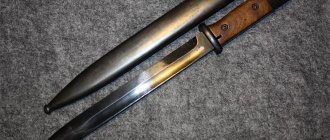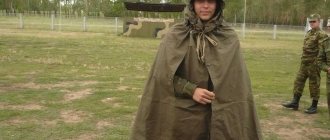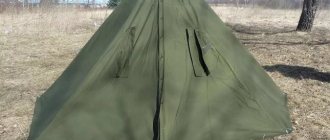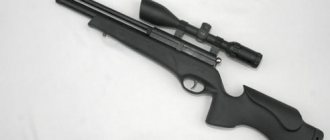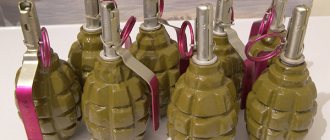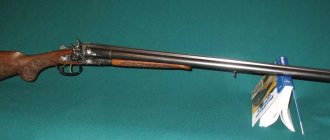Raincoat tent as a tent: design and manufacture
The raincoat itself is made of thick canvas.
As mentioned above, the standard size of the pattern is 180 by 180 cm. If necessary, you can change the size for yourself, but in such cases it will not be possible to combine it with other raincoats if necessary. Since in most cases this item is used in forest conditions, the color of the material should be close to khaki or camouflage.
You can sew a tent cape using the following pattern:
Pattern of a raincoat tent
The structure of the tent, in addition to the fabric panel, implies the presence of:
- Lacing ropes. Their diameter can be up to 5 mm, and there must be a winding at the ends;
- Racks;
- Wooden jokes. As a standard, birch is used for their manufacture. But if necessary, you can choose another hard rock;
- Metal jokes. A simple steel wire is suitable for them. Diameter – 4 mm.
The amount of inventory depends on the size of the proposed structure. The tent can be pitched for one person, or one large shelter can be created from several interconnected panels.
German raincoat Bundeswehr Zeltbahn 31
A shelter for several people from German raincoats is built much faster.
A German-made product of the 1931 model, which was in service with the Wehrmacht and was made of waterproof cotton gabardine, is distinguished by a triangular shape. It replaced the earlier quadrangular equipment models. The new products had camouflage colors in different shades: one side of the cloth was darker, and the other was lighter.
German raincoats could also be combined into panels and used to build large shelters for soldiers. Now similar models are found among collectors; reed-green and light bronze raincoats issued for the troops stationed in North Africa are considered of particular value. German models differed from Soviet ones not only in shape:
- The size of the panel is 203 by 250 cm;
- On each of the short sides there were 12 buttons with loops;
- The underside had 6 small rings and the same number of button loops.
During World War II, the Germans often built large shelters with 16 seats from individual raincoats. For this purpose there were special bags with a set of accessories.
Meaning
This is the common name for portable camping equipment made of waterproof material that can be used as a tent or raincoat (when rolled up). If necessary, it is also used as a drag or stretcher for carrying the wounded and sick.
It is believed that the ancestor of this useful military equipment is an epancha raincoat with a hood and collar, which was worn by Russian soldiers under Peter the Great. In the second half of the nineteenth century, waterproof raincoats became a mandatory component of army camping equipment. At first they were part of the standard equipment of officers, and then of ordinary soldiers.
Thanks to such a useful item, you can hide from bad weather, disguise yourself, and carry the wounded and sick. If you fill it, for example, with straw or hay, you will get a fairly effective homemade watercraft that allows you to overcome water obstacles. When rolled up, this equipment often became a camp cloak or was used as a blanket or bedding. The standard option is a canvas panel measuring 180 by 180 centimeters, painted on both sides in camouflage camouflage colors.
How to use an army raincoat
An army raincoat is a multifunctional piece of military equipment made of high-strength fabric. It can be used as a raincoat, blackout agent, cape, bedding, awning, blanket, and even as a stretcher and flotation device.
A raincoat-tent is indispensable for servicemen in combat, field and marching conditions. In addition, its advantages were appreciated by tourists, hunters and fishermen.
The history of the creation of the first models
The first raincoat was invented back in the 18th century. The exact history of its origin is unknown, although historians claim that since 1882 it has become an integral part of military equipment. For those times, the creation of an individual army raincoat became a real salvation from inclement weather. According to the regulations, soldiers' raincoats were transported in a second-class convoy.
He walked behind at a distance equal to half a day's journey. That is, we had to wait for a place to sleep until late at night or in the morning. Individual products gave soldiers the opportunity not to wait for arrival and create shelter from inclement weather from a raincoat. At first, the raincoat-tents were fastened behind the back in the form of a bundle. Over time, the soldiers adapted to shelter her on the way.
Noticing the resourcefulness of the army, some of the equipment was modernized. Thus, the soldier's raincoat acquired its main form and name in 1910. After short use, the following disadvantages were noted:
- the front part went down to the knees, so heavy rain wet the trousers;
- the back part, due to its length, was bent and tucked into the belt. As they walked, raindrops dripped down into their boots;
- if the rear corner is not tucked in, it will drag along the ground, rustling annoyingly. After some time, a military man could even lose part of his equipment;
- the fabric was thin and after 3-4 hours it became thoroughly wet.
From the history of the origin of raincoats
It is known that in 1882, raincoats were a mandatory attribute of soldiers' camping equipment. This cloak looked like a light gray bundle that soldiers wore over their shoulders and tied with belts to their overcoat rolls. The set of tents included wooden pegs and poles that were pushed between the tents and the rolls.
It should be noted that for that time this was a revolutionary decision. For the first time, soldiers received protective equipment against bad weather at a halt, as well as on the march. And this was important. Previously, soldiers' camp tents were transported in second-rate convoys, which, according to regulations, followed the regiments at a distance equal to half a day's march, which was usually as much as 20-30 miles. Now soldiers had personal resting places that could be installed at any time of the day.
At first, tents were simple panels with holes in the corners for ease of installation. However, soldiers more often covered themselves with tents from the rain on marches. They learned to use tents as a cloak. The authorities took a closer look at the soldiers' behavior, and in 1910 the tents were modernized.
In Soviet times, since 1936, command and rank and file personnel in the rifle units of the Red Army were provided with a set of raincoats, which included:
- The raincoat cloth measures 180×180 cm;
- A collapsible stand, which includes two half-racks-rods 65 cm long;
- Two jokes;
- Lacing rope.
If used skillfully, raincoats became excellent protection for commanders and Red Army soldiers from inclement weather. Moreover, these attributes were used to camouflage and carry the wounded. Also, with the help of raincoat tents filled with hay or straw, it was possible to overcome water obstacles.
Such raincoats were used to make tents for personnel for half of the squad, and they were also used to equip awnings, canopies, cover huts, open trenches, and entrances to dugouts. In addition, the panels could serve as bedding and blankets. Since 1942, the defense industry began producing fabrics with double-sided camouflage to improve the camouflage properties of the raincoat.
Varieties
Raincoats are available in several variations:
- Frame-deciduous. This is an army product that can be built on site from scrap materials. To do this, you will need branches to create a frame. Then a cloak is placed on the structure, which can additionally be covered with branches with leaves or spruce branches.
- Frame-fabric. Unlike the first option, the fabric is stretched thanks to the included stands, as well as twigs and branches.
- Fabric. To make the products you will need thick waterproof fabric. This can be film, tarpaulin or other rubberized material. The canvas is thrown over a stretched rope, and fixed from below using improvised means.
Description of the classic raincoat
The classic model is a square tarpaulin. There are 4 eyelets in the corners, which are designed for fastening. There are buttons on one side of the cloak, and loops on the other. They are designed to be able to increase in size by connecting several canvases.
A braid was threaded into the cloak, with the help of which a hood was formed in a matter of seconds. They were also used for attaching small but important things to outerwear.
Over time, a button was made on the back, to which the long corner of the cloak was attached.
Soldier's raincoat-tent
This is part of the soldier’s equipment, consisting of square-shaped panels. The standard size is 1.80*1.80 m. They are made of thick cotton fabric, and the kit includes fastening devices. Each canvas can be used by a soldier as a cape, and combining several allows you to create a spacious shelter.
Use for other purposes
Raincoat-tent as a canopy
In fact, this amazing invention can serve other functions besides being a shelter. Here's where else a raincoat can come in handy:
- Blackout. Due to its dense structure, the canvas fabric of the raincoat holds back the sun's rays well, from which it is sometimes necessary to hide. They can be used to curtain doorways or windows;
- Carrying. If suddenly someone is injured during a hike, and there is no stretcher at hand, a raincoat tent will come to the rescue. Its fabric is strong enough to support the average weight of a person. It can also be used to transport waste waste in large quantities;
- Bedding or blanket. Even in low temperature conditions, you can hope that the raincoat will try to retain as much heat as possible, since the material has a good level of thermal insulation;
- Tent. It is not necessary to install a raincoat in the form of a tent if you need to create shelter for yourself. You can also make a small tent out of it. To do this, the cloak is stretched between two trees and secured with eyelets;
- Cloak or cape. This is its most standard purpose. For a simple cape, you need to pull out one lace and tie it around your neck. For the second option, you can pull out both laces to form a hood.
The downside of the raincoat is the lack of waterproofing. It is better to use it as a raincoat in light rain, as in heavy rain it will get wet in a few minutes. There is an officer version of the tent cloak. It features rubberized fabric with a good level of waterproofing, but its functions are limited.
https://youtube.com/watch?v=-7umGL5bYT8
Options for using universal army equipment
Dense and lightweight tent fabric makes it possible to use this invention for various needs:
- Blackouts. The structure of the material does not allow the sun's rays to pass through, from which you can hide in the summer. At night, under the tarpaulin, the light of a flashlight or the light of a match or cigarette is not visible, which can reveal the presence of a person to an outside observer or an animal. In domestic conditions, door and window openings are covered with tarpaulins;
- Carrying. There is no need to explain that an accident can happen to anyone on a hike, and your comrades will have to quickly deliver the victim to a hospital or first aid station. The dimensions and density of the material can easily support the weight of an average person; in extreme cases, the cloth is used as a drag;
- Blanket or bedding. The level of thermal insulation makes it possible to use a raincoat tent in this capacity. Many lie down on one part and cover with the other;
- Tent. If there is no desire to make a full-fledged shelter, then the panel is stretched between two trees and secured with eyelets;
- Cape from bad weather. In the army, these products are most often used this way. It is enough to pull out one lace and tie the second one in the neck area. To make a hood, you need to pull out both laces.
Despite the variety of choices in the modern world of tourist equipment, soldier's raincoats are still very popular among fishermen, hunters and tourists. The combination of low price and light weight makes it a leader in the budget segment.
Raincoat today
The last modernization was in 1910. Since then, the officer's raincoat has not undergone significant adjustments and has retained its appearance until the 21st century.
A modern raincoat has been improved only in terms of fabric quality. It is more durable, water-repellent impregnation is applied to it, and modern coloring allows you to make a reliable and discreet military shelter.
Description and technical data
In addition to the textile fabric, the kit includes:
- laces with a diameter of about 5 mm;
- racks;
- wooden pegs. In production, hard wood species are used, most often birch;
- metal pegs. They can be made from 5 mm steel wire.
The officer's raincoat is made of durable tarpaulin. When folded, it is similar in size to a two-liter plastic bottle. When unfolded, it is a square measuring 1.80 * 1.80 m. Eyelets made of leather or metal are installed along the edges. The weight of the product does not exceed 1.5 kg.
Application options
A raincoat tent is an invention that can perform many functions while camping. Use options for other purposes:
- The cloak is a standard feature. By pulling one cord you get a cape. And if you pull out two laces at once, a hood is formed.
- The tent is the second function for the invention. She is the main one.
- Blackout. The dense texture reliably protects from bright sun rays, keeping you cool in the shade. Sometimes they are even used at home to cover windows.
- Carrying. Along the way, you may get injured and not be able to continue moving on your own. The fabric used to sew the raincoat is quite strong. It can support the weight of an average person. It can also be used to transport other things.
- Bedding and blanket. The dense texture reliably protects a tourist or soldier in inclement weather. The material has heat-insulating properties and maintains temperature for a long time. Also in the army, such fabric is used as a tablecloth or for cleaning military weapons.
- Tent. By stretching the fabric between the trees, you will create a reliable shelter.
- Hammock. The fabric is stretched between the trees and secured at a convenient height.
How to make a complete shelter from bad weather from a raincoat
The simplest shelter is made in no more than 10–15 minutes. The volume of the covered area depends on the number of people and the available material. So, shelter can be created in the form of a tent. It will reliably protect you in cold and rainy weather.
The material will retain heat. It can be used for one person, or for six or more. If any end remains open, it is recommended to place it on the leeward side.
How to make a tent bed from a raincoat
For the bed you will need two long poles with a thickness of at least 6–7 cm. The canvas is folded in half and the edges are sewn together. Next, the poles are threaded into the resulting sleeve, and their edges are supported by four slingshots at the edges. Recommended height 20–25 cm.
This way you will make a bed like a folding bed. The second fabric is stretched from above at an angle of 45°. To do this, two ends are attached to high pegs on one side of the bed, and the other ends to the ground. Such a canopy will protect from rain and wind if placed on the leeward side. If the weather is good and no rain is expected, then the canvas can be used as a blanket.
How can you make a complete shelter from bad weather from a raincoat?
The simplest shelter can be made in 10-15 minutes
. A raincoat-tent can be installed in various ways, it depends on how many people are trying to hide under it, and how many products they have. The easiest way to build a weather protection shelter for one person is:
- First, install the stand; in this installation option, it rests on the middle loop of the tarpaulin side;
- A pull is made from the stand using a rope pulled through the loops of the fasteners;
- The corners of the cloak are fixed to the ground with pins. If you don’t have them at hand, you can use heavy stones as corner fixers.
One of the main disadvantages of a shelter for one person will be the inability to close on all sides, so you need to focus on the direction of the wind.
A tent for two people is constructed as follows:
- Two cloaks are connected to each other, creating two roof slopes;
- The open ends are secured using half-posts and two ropes;
- The free corners of each of the panels are fixed on the ground.
If there is a need to make a shelter for three, then the third raincoat-tent is secured as a side end. In the version for four people, all ends are covered with panels, and the end seams are laced.
In the history of Russian troops, it often happened that soldiers built shelters for five people; in this version, a slightly different technology was used:
- Each side slope is made of panels connected to each other;
- The fifth panel goes to the end;
- One side does not close;
- The structure is secured by 3 half-posts.
When installing shelters from raincoat tents, it is strongly recommended to use dug out turf; it is advisable to lay it out along the entire perimeter of the canvas below. This will provide a tighter fit and help the structure withstand sudden gusts of wind.
How to assemble correctly?
The raincoat tent may have different sizes depending on the model range. Depending on how many people it is designed for, the following installation instructions are used.
- The stand must be placed so that it rests tightly on the middle loop of the structure located on the side of the tarpaulin. In this case, the guy is done using a rope, and the four corners of the raincoat are attached to the ground with pegs. If there are no pins available, then the canvas is pressed down with stones.
- To assemble the shelter, you need to connect two raincoats to each other, each of them will represent a separate roof slope. The open ends should be secured with 2 ropes and half-posts, and 2 free corners should be fixed to the ground with pegs.
- Installation of an overnight stay is carried out according to the instructions, as for tents designed for 2 people. The only thing is that in this design the base is formed by two canvases, and the third is used to cover the side end. Thanks to this, only one part of the structure remains open.
- This shelter can be assembled either completely closed, protecting the sleeping area from the negative effects of external factors, or one part can be left open. For installation, 2 ropes are required for the guy line and 2 for lacing the end seams.
- It is a spacious structure, the roof slope of which consists of 2 raincoats connected to each other, and the 5th covers one end. The second end remains open. To install such a shelter, 3 half-posts are required.
As for the ways to assemble a tent, there are many of them. The most popular options include the following.
- The canvas is attached to the ground with stakes through eyelets at two adjacent corners. A central stake, no more than 60 cm high, is placed in the middle. Those corners that remain are also stretched and fixed with stakes. The disadvantage of this installation method is that it is difficult to do alone - it is better to tension the canvas on both sides at the same time. In addition, in such a design there is little space.
- First, you need to strengthen one corner with a peg, then tie a rope to the grommet of the opposite corner. The end of the main post must also be inserted into this rope, which should rest firmly on the ground in a vertical position. By holding the stand in this position, the ropes are temporarily secured to a stake driven into the ground. First of all, one side is stretched, then the other. This design is roomy and perfect for fishermen and hunters.
- To set up an overnight shelter, you should choose a place with a flat surface, preferably one that is higher than the surrounding surface. The area is thoroughly cleared of cones, branches and stones. After this, the two cloaks are sewn together using a rope, which is pulled through special fasteners. Then two risers up to 120 cm high are prepared, they are installed in the eyelets of the corners and ropes are tied, tensioning the fabric. It is best to assemble such an overnight shelter with three people (two people will attach the risers, and the third will ensure that the structure is level).
If installing a raincoat tent is being done for the first time, then experts recommend that beginners take into account the following recommendations.
Since a raincoat usually consists of two connected fabrics, when sewing them together it is important to control that the top of the fabrics is as close as possible to the ridge. Otherwise, water from rain will gradually accumulate at the seams and eventually leak into the structure
This also applies to the slot for the hand - it should be placed in such a way that water flows over the top and does not flow inside. Where you plan to place the lower edges of the tent, you need to clear the area well of grass. This will ensure a tight fit and sealing. It won’t hurt to clean the area around the tent, be sure to dig a ditch 15 cm wide and 10 cm deep. The dug ditch will collect water flowing from the structure and drain it to the side. It is best to stay in a tent for the night across the line of the visor, and you need to additionally check that nothing touches the fabric of the tent. If there is emphasis on the fabric from the outside, the property of reflecting water is lost, and moisture can enter the shelter. Despite the fact that a raincoat is an excellent shelter from bad weather, it will not be able to protect its abodes from blood-sucking insects and animals. Therefore, before going out into nature, you need to worry about the availability of special protective measures. This is especially true for long overnight stays in open areas.
DIY making
The sewing instructions are simple. To make a raincoat you will need:
- thick canvas fabric;
- lace ropes with a diameter of 4–5 mm;
- steel wire for making racks or wooden racks;
- eyelets.
The fabric is cut to the selected size. Most often it is 1.80 * 1.80 m. Some tourists treat it with special water-repellent lubricants. Next, places for installing eyelets are marked.
Its small size allows you to place it in a hiking backpack. Weight about 1.5 kg. If you decide to sew a larger analogue of a raincoat tent, then the weight will be greater. Many tourists claim that this option can shelter a larger number of people. It’s easier to connect several soldier’s raincoats, because that’s exactly what they are designed for.
With this compact product, spending the night in the forest can become much more comfortable. The raincoat-tent is an invention that has passed through the centuries, but remains relevant.
